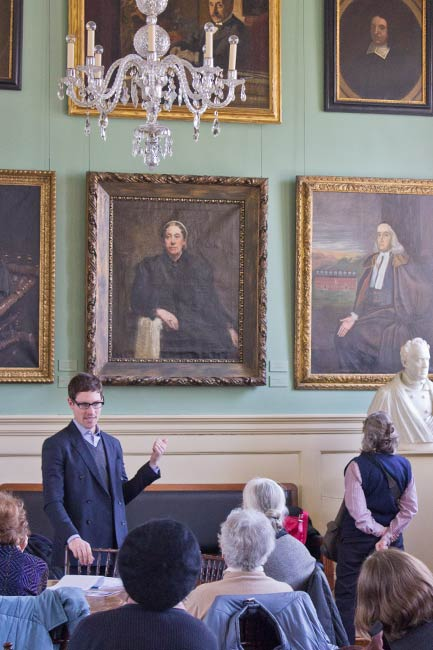South Asian art pigments are a fascinating blend of colors and materials that have shaped the rich artistic heritage of the region. These vibrant hues not only bring life to traditional Indian manuscripts but also offer a glimpse into the historical techniques and cultural influences that defined their creation. Recent pigment analysis has revealed the complexity of pigment sources, highlighting that some historical pigments thought to be European imports may have been utilized locally much earlier than previously believed. Efforts in art conservation and projects like MFA pigment mapping are shedding light on these indigenous colorants, revolutionizing our understanding of South Asian art history. As we uncover the secrets of these pigments, we embark on a journey that honors both the past and the traditions that continue to inspire contemporary artists today.
Exploring the world of colorants in South Asian visual arts reveals a treasure trove of artistic techniques that have evolved over centuries. These historical colorants tell stories of cultural exchange, local craftsmanship, and the enduring legacy of ancient artisans. The investigation into the pigments used in traditional artwork not only aids in the preservation of these treasures but also contributes to the ongoing dialogue in art conservation. By employing advanced methodologies such as pigment mapping, scholars are able to connect the dots between historical context and the material choices of artists. This deeper appreciation for the palette of the past enriches our understanding of Indo-South Asian cultural expressions and their impact on the global art narrative.
Understanding South Asian Art Pigments
South Asian art is renowned for its vibrant colors, which carry cultural significance and historical relevance. By studying South Asian art pigments, researchers have uncovered a palette that tells stories of trade, artistry, and indigenous techniques. These pigments have unique origins and compositions, sometimes contrasting with what is traditionally found in Western European art. For instance, the discovery of cobalt in a 15th-century Indian manuscript raised questions about pigment origins, leading to the realization that some colors widely believed to be imported may have been used in South Asia much earlier than previously understood.
This ongoing exploration is critical not only for art conservation but also for understanding the interplay of cultural influences through history. Historical pigments in South Asia often draw from local materials, indicating a sophisticated knowledge of colorants developed within the region. As art historians and conservators delve deeper into your pigment analysis, a richer narrative emerges about the interconnectedness of artistry and identity across this vast and diverse landscape.
The Role of Pigment Analysis in Art Conservation
Pigment analysis plays a vital role in art conservation, enabling scientists to identify the materials and techniques used by artists. This process is especially important for preserving the integrity of historical artworks, where modern restoration methods might compromise the original aesthetics. By employing non-destructive methods like x-ray fluorescence and Raman spectroscopy, conservators can gather data without altering the artwork itself. This careful approach is essential, particularly when working with ancient pieces where sampling is often destructive.
Furthermore, the findings from pigment analysis inform conservation strategies and help in reversing damage caused by time and environmental factors. By understanding the composition of pigments used in South Asian art, conservation scientists are better equipped to formulate appropriate interventions. The meticulous documentation of these processes ultimately contributes to creating a comprehensive database that can serve as a resource for future scholarship and conservation efforts.
Exploring Historical Pigments in Indian Manuscripts
Indian manuscripts, with their intricate designs and vivid colors, hold a treasure trove of historical pigments that reveal much about the cultural practices of their time. Historical pigments found in these works, such as Indian yellow and orpiment, showcase the diversity of natural colorants available to artists. These manuscripts were often created under careful conditions, utilizing materials sourced from the immediate environment, thus grounding their palettes in local traditions and economies.
Research into these historical pigments not only enhances our understanding of artistic techniques but also the socio-economic contexts in which they were produced. By mapping the origins and uses of pigments, scholars gain insights into the exchange of knowledge and materials across regions. The study of historical pigments in Indian manuscripts exemplifies how art conservation can serve dual roles: preserving the past while charting the influences that shape our present understanding of artistic legacy.
Technological Innovations in Pigment Mapping
The advent of new technologies has transformed pigment mapping and analysis in South Asian art. Tools such as infrared and ultraviolet imaging allow for a more nuanced understanding of how pigments behave under different conditions, revealing hidden layers and details that may not be visible to the naked eye. For instance, the unique response of Indian yellow to UV light provides vital clues to artists’ choices and techniques, enriching our appreciation of their skills.
Innovations like these bridge the gap between art history and scientific inquiry, creating a collaborative environment that fosters deeper explorations of cultural heritage. The Mapping Color in History Project exemplifies this intersection, uniting experts in digital humanities and art analysis to build a comprehensive database. By mapping historical pigments and their origins, this work not only preserves art but fosters a dialogue between history and modern scientific practices.
Collaboration in Art Historical Research
The collaborative nature of art historical research is of paramount importance, particularly in projects like Mapping Color in History. By bringing together scientists, conservators, and art historians, the project exemplifies how interdisciplinary teamwork leads to richer insights and advances in understanding South Asian art. Such collaborations enable a sharing of expertise, resulting in innovative methods of analysis that respect both the art itself and the scientific rigor required for accurate research.
For instance, as technology is incorporated into the analysis, it becomes essential for each team member to understand the implications of their findings across different fields. Art historians may offer context for the scientific data derived from pigment analysis, while scientists provide the analytical techniques needed to validate historical assumptions. This integrative approach not only enhances the results but also encourages continuous learning and adaptation in methodologies for future research.
Indigenous Knowledge of Colorants in South Asia
The exploration of indigenous knowledge surrounding colorants in South Asia reveals a rich history of artistic practice that predates European influence. Understanding local sources of pigments not only sheds light on age-old techniques but also reclaims narratives often overshadowed by colonial perspectives. Research initiatives focused on indigenous colorants allow for a broader understanding of how South Asian artists utilized local resources to create vibrant works, which were often tied to cultural and spiritual significance.
As we study these indigenous techniques and colorants, it is crucial to acknowledge and celebrate the unique contributions of South Asian artistry. This exploration requires an open mind toward the historical context in which these colorants were used, fostering a more inclusive view of art history that recognizes the sophistication and creativity inherent in South Asian artistic traditions.
Mapping Cultural Influences in Art
Mapping the cultural influences present in South Asian art helps to elucidate the interactions between different artistic communities and practices. Artworks often reflect a tapestry of influences, derived from trade routes, migration, and cultural exchanges. By analyzing pigments and their origins, researchers can trace pathways of exchange that illuminate how ideas and materials moved across regions. This mapping contributes to a dynamic understanding of cultural production, revealing shifts in identity and artistry that have evolved over centuries.
Understanding these cultural influences is vital for appreciating the complexities of South Asian art. The legacy of historical pigments extends beyond their mere visual appeal; they serve as testimonies to the interconnectedness of human experiences. By documenting these influences, future generations can appreciate the collaborative nature of creativity that spans borders and time, fostering a sense of shared cultural heritage.
Art Conservation and Its Impact on Cultural Heritage
Art conservation plays a pivotal role in preserving cultural heritage, ensuring that future generations have access to historical artworks. Effective conservation techniques help maintain the integrity of these pieces while allowing ongoing research to inform best practices. As scientists and conservators analyze pigments and their origins, they can create preservation strategies that not only protect the physical works but also the stories they tell.
The impact of such conservation efforts extends beyond individual artworks, influencing broader discourses on history, identity, and cultural representation. By prioritizing the conservation of South Asian art, institutions and researchers collectively work to uphold and honor the rich narratives embedded within each piece, making them accessible to diverse audiences. This holistic approach to art conservation embodies a commitment to safeguarding cultural legacies for future exploration and appreciation.
Future Directions in Pigment Database Research
Future research in pigment databases promises to expand our understanding of South Asian art significantly. With the advancements in technology and analytical techniques, researchers can continually refine and update the existing databases to include more artworks and broader geographical contexts. This ongoing work involves not just adding new data but also improving the accuracy of existing records through ongoing research and scholarship.
By harnessing collaborative efforts and integrating emerging technologies, the future of pigment analysis appears bright. Scholars eagerly anticipate uncovering hidden trends and patterns that could reshape our understanding of historical pigments in South Asian art. This continuous journey towards knowledge enhancement is essential for uncovering the complexities inherent in artistic practices and historical narratives, ultimately enriching both scholarly pursuits and public appreciation of cultural heritage.
Frequently Asked Questions
What is the significance of pigment analysis in South Asian art?
Pigment analysis in South Asian art is crucial for understanding the historical usage of pigments, artistic techniques, and the cultural contexts in which artworks were created. By examining pigments through scientific methods, researchers can uncover indigenous colorants and identify possible European imports, enhancing our knowledge of regional art practices.
How do historical pigments inform art conservation in South Asia?
Historical pigments provide important insights into the materials originally used by artists, which is essential for effective art conservation in South Asia. By understanding the composition and origin of these pigments, conservators can choose appropriate restoration methods, ensuring the integrity and authenticity of artworks.
What role do Indian manuscripts play in the study of South Asian art pigments?
Indian manuscripts are vital in the study of South Asian art pigments as they often reveal unique pigment compositions and techniques used by artists of historical periods. Analyzing these manuscripts through modern pigments mapping techniques helps researchers identify indigenous colorants that may predate European influences.
How has MFA pigment mapping contributed to the understanding of South Asian art pigments?
MFA pigment mapping has significantly advanced the understanding of South Asian art pigments by creating a comprehensive database that documents the pigments found in various artworks. This project allows researchers to compare data across different pieces, enhancing our understanding of regional pigment usage and historical trends.
What is the impact of contemporary traditional artists on the understanding of historical pigments in South Asian art?
Contemporary traditional artists, like Babulal Marotia, offer valuable insights into historical pigments by using materials and techniques that have been passed down through generations. Analyzing their work helps researchers connect present practices with historical pigment usage, providing a living link to South Asia’s artistic heritage.
What challenges do researchers face in mapping the history of pigments used in South Asian art?
Researchers encounter challenges in mapping the history of pigments in South Asian art due to the lack of precise records regarding the date, location, and artist of many historical pieces. The broad categorization, such as ‘North India, 17th-18th century,’ complicates efforts to pinpoint specific origins and requires extensive comparative studies.
Why is it important to document indigenous knowledge of colorants in South Asian art?
Documenting indigenous knowledge of colorants is essential for recognizing the unique artistic identity of South Asian art. It helps to shift the narrative from a Eurocentric perspective to a more inclusive understanding of colorants, highlighting the sophisticated practices and materials that originated in the region long before European imports.
How do non-destructive methods benefit the analysis of pigments in South Asian artworks?
Non-destructive methods benefit the analysis of pigments in South Asian artworks by allowing scientists to study valuable pieces without causing harm. Techniques like x-ray fluorescence and Raman spectroscopy enable the identification of pigments at a molecular level, preserving the integrity of artworks while providing critical data for research.
What future developments are expected in the field of South Asian art pigments research?
Future developments in South Asian art pigments research include the expansion of pigment databases, improved visualization tools, and further interdisciplinary collaboration. These advancements aim to provide deeper insights into artistic trends, enhance conservation practices, and increase public accessibility to research findings.
How does the Mapping History project enhance the understanding of pigment usage in South Asian art?
The Mapping History project enhances the understanding of pigment usage in South Asian art by creating an open-access database that combines artwork details with scientific pigment analysis. This collaborative effort facilitates greater knowledge sharing and encourages dialogue across disciplines, enriching the field of art history and conservation.
| Key Point | Details |
|---|---|
| Origin of Cobalt Pigment | Cobalt was detected in a 15th-century Indian manuscript, suggesting possible European influence but further studies indicated indigenous sources. |
| Mapping Color in History Project | Started in 2018, aims to create a comprehensive pigment database for South Asian art, challenging Eurocentric views on pigments. |
| Significance of Database | The database allows searches by various parameters and assists scholars and enthusiasts in understanding pigment usage in Asian artworks. |
| Non-Destructive Analysis | Experts use non-destructive methods like UV imaging and Raman spectroscopy to analyze pigments without damaging artworks. |
| Collaboration and Expertise | The project is a collaboration among art historians, conservation scientists, and digital humanities experts to create a user-friendly database. |
| Artistic Insights | Findings reveal artists’ choices in pigment use, indicating a nuanced understanding of color in historical South Asian art. |
| Continued Research | The project invites ongoing research to refine the database, aiming to uncover more about South Asian art traditions. |
Summary
South Asian art pigments play a crucial role in understanding the historical and cultural contexts of artistic practices in the region. The Mapping Color in History Project challenges previous assumptions about pigment sources, revealing a rich tapestry of indigenous knowledge and utilization of colorants throughout history. Through innovative scientific analysis and collaboration across disciplines, this project not only enhances our understanding of South Asian art but also opens doors for future exploration into the vibrant world of color used by artists of the past.


